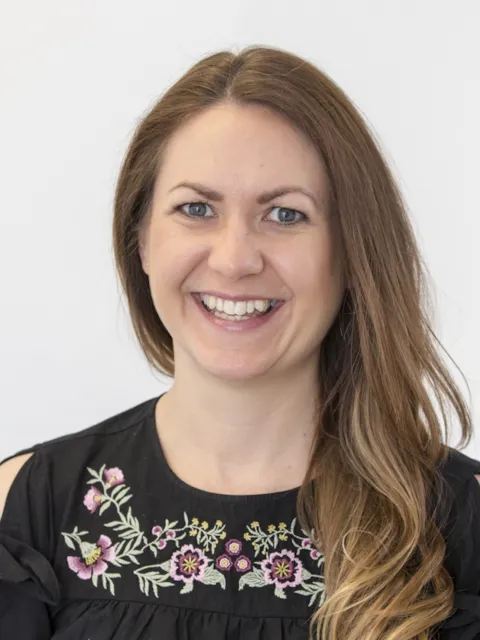
Dr Matejka Rebolj and Jane Rigney, from the Centre for Cancer Screening, Prevention and Early Diagnosis, Queen Mary University of London, lend their reflections on the meeting in Brussels, how to work together to reverse the decline in cervical cancer screening, and the importance of hearing from people with lived experience, and learning from each other.
Cervical cancer is the fourth most common cancer in women globally with around 660,000 new cases and around 350,000 deaths in 2022.[i] Its elimination can be achieved through vaccination, screening and treatment of screen-detected pre-invasive lesions. While HPV vaccination is highly effective, it will take many years to achieve maximum protection.
National screening programmes have been successful in reducing cervical cancer rates by up to 80%.[ii] However, alarmingly, there has been a significant decline in screening participation even in high-income countries where screening has been free of charge. The consequences of this decline are evident in Canada, where cervical cancer has become the most rapidly increasing cancer with a 3.7% annual increase since 2015.[iii]
The role of patient advocacy groups
Patient advocates and women’s rights leaders from around the world met in Brussels in May 2024, to share strategies to tackle declining screening rates and achieve the goal of eliminating cervical cancer.
This event, co-chaired by Matejka Rebolj and Athena Lamnisos, CEO of The Eve Appeal, aimed to build relationships and enable participants to learn from each other to reverse the declining number of women and people with a cervix undergoing cervical cancer screening, thereby helping to achieve the WHO’s goal to eliminate cervical cancer.
The attendees from Belgium, Canada, Finland, France, Spain, Hungary, Netherlands, Switzerland, Turkey, the US and the UK, shared an overview of their activities and the nuances related to cervical cancer screening and prevention in their country or region. Listening to them speak passionately about the work they do was truly inspirational. The dedication and enthusiasm was contagious, igniting a sense of purpose and motivation in everyone present.
A predominant theme was the role that patient advocacy groups and women’s rights organisations play in driving education and increased awareness among those populations who are at risk of developing cervical cancer. Specifically by:
- Raising awareness of cervical cancer screening benefits, follow up of screen-detected abnormalities and HPV vaccination.
- Addressing the barriers and challenges that different groups of women face around screening.
- Sharing the evidence on what will effectively address these challenges and acting on it.
- Targeting under-screened populations.
- Designing, implementing and evaluating medical services, along with the relevant stakeholders, to ensure tailored interventions reach all the groups eligible for screening.
All of this work requires complex collaboration beyond national borders, and targeted communication approaches co-developed by healthcare professionals, scientists, local policy- and decision-makers, patient advocacy groups and local communities. This is no easy feat.
Increasing the visibility of patient advocates
Jane Rigney, Clinical Project Manager at the Wolfson Institute of Population Health, Queen Mary University of London, is currently leading a project to increase the visibility – among scientists and ultimately policymakers – of the cervical screening public engagement work that patient advocacy groups are doing, and ensure that the voices of people with lived experience are heard in the world of research.
Jane shared the idea behind this project at the event, as well as her intention to create a mosaic of this important work, thanks to an online questionnaire that Patient Advocacy groups can fill out sharing details of relevant initiatives, ultimately exhibiting it in the form of a scientific publication. This paper will be used to spark conversations with researchers and policymakers, bringing their attention to this crucial topic.
Changing current screening programmes
Changes to current screening programmes can have significant implications for public health, resource allocation, and patient outcomes. When considering these changes, it is essential to analyse and learn from the experiences of other countries that have adopted new strategies and technologies. For example, the Netherlands introduced HPV self-collection tests for all eligible women in 2017. Unfortunately, data show the Netherlands’ cervical cancer screening participation rates have continued to decline in recent years.[iv],[v]
This does not mean that self-collection tests do not have a place in cervical cancer screening. Their rollout needs to be prioritised, especially for women requiring an alternative to clinician collection. Still, we should carefully consider how they are incorporated into current screening programmes.
The goal of eradicating cervical cancer is a monumental one, and addressing the specific questions from our discussions will be essential in making this a reality:
- How can targeted national educational and awareness campaigns support the implementation of new technologies?
- How can unscreened and irregularly screened women be counselled/supported to take up the offer of self-collection?
- How can we make sure that all women to undergo screening, regardless of the health, social and other challenges that they face in their daily lives?
- How can women who normally have clinician collected screening be educated on the trade-offs including differing sensitivity, between the two options?
- How to ensure women attend clinician-led follow-up appointments after a positive HPV self-collect sample?
Many countries have by now committed to implementing strategies to eradicate cervical cancer. A world without this devastating disease may indeed be within reach with the right political and societal commitment, and patient advocacy groups are crucial in achieving this historic goal. The time to act is now!
We left the meeting feeling empowered and confident that we are indeed ‘better together’. The day was a welcome reminder of the power of collaboration and commitment and the difference one can make when driven by passion.
If a patient advocacy group is interested in being part of the work to increase the visibility of the cervical screening public engagement work, contact Jane at jane.rigney@qmul.ac.uk.

Matejka Rebolj PhD: Senior Epidemiologist, Queen Mary University of London
Dr Rebolj holds a PhD in public health/epidemiology from Erasmus Medical Centre, Rotterdam. She has served as a postdoc and associate professor at the University of Copenhagen and as a senior researcher at Copenhagen University Hospital Hvidovre. Joining the Cancer Prevention Group in 2016, her research focuses on evaluating current and new screening methods. She was the principal investigator for the English HPV Pilot and is a steering committee member of ECaDE. Dr Rebolj is also a member of Public Health England’s Laboratory Technology Group.

Jane Rigney MPH: Clinical Project Manger, Wolfson Institute of Population Health, Queen Mary University of London
Jane completed her BSc and MSc in Public Health at University College Cork, Ireland, and has over ten years of experience in clinical research, trial recruitment, research governance, and project management. Since joining the Cancer Prevention Group in 2017, she specialises in Project Management with a focus on self-sampling trials and leads the development of the Patient and Public Involvement (PPI) strategy and the group’s blog.
Sources
[i] World Health Organization. Cervical Cancer. https://www.who.int/news-room/fact-sheets/detail/cervical-cancer#:~:text=Cervical%20cancer%20is%20the%20fourth,%2D%20and%20middle%2Dincome%20countries. Last accessed 25 June 2024.
[ii] Sung H, Ferlay J, Siegel RL, et al. Global Cancer Statistics 2020: GLOBOCAN Estimates of Incidence and Mortality Worldwide for 36 Cancers in 185 Countries. CA Cancer J Clin. 2021;71(3):209-249.
[iii] Canadian Cancer Statistics 2023. Available at: https://www.canada.ca/content/dam/phacaspc/documents/services/reports-publications/health-promotion-chronic-disease-prevention-canadaresearch-policy-practice/vol-44-no-1-2024/canadian-cancer-statistics-2023.pdf. Last accessed 25 June 2024.
[iv] Aitken C et al. Investigating the decrease in participation in the Dutch cervical cancer screening programme: The role of personal and organisational characteristics. Preventive medicine reports. 2021; 22: 101328. DOI:https://doi.org/10.1016/j.pmedr.2021.101328.
[v] RIVM. Landelijke Evaluatie van het Bevolkingsonderzoek Baarmoederhalskanker (LEBA) t/m 2016. Available at: https://www.rivm.nl/documenten/landelijke-evaluatie-vanbevolkingsonderzoek-baarmoederhalskanker-lebatm-2016
